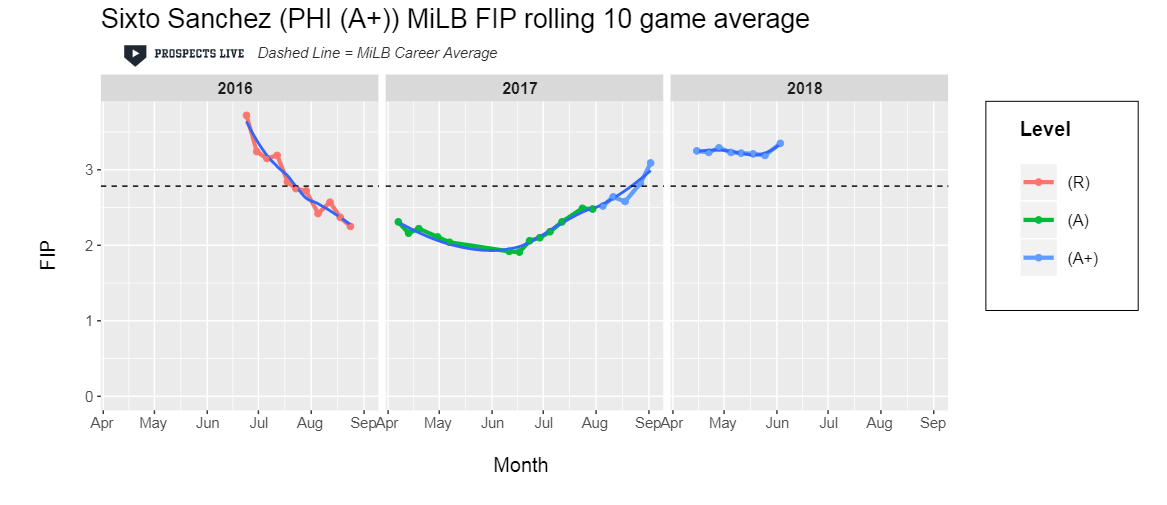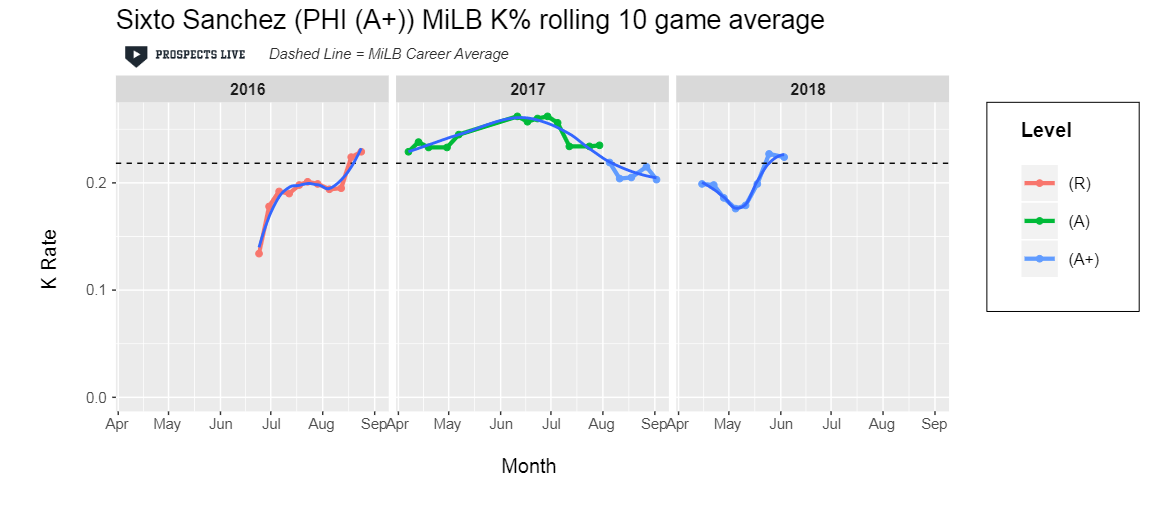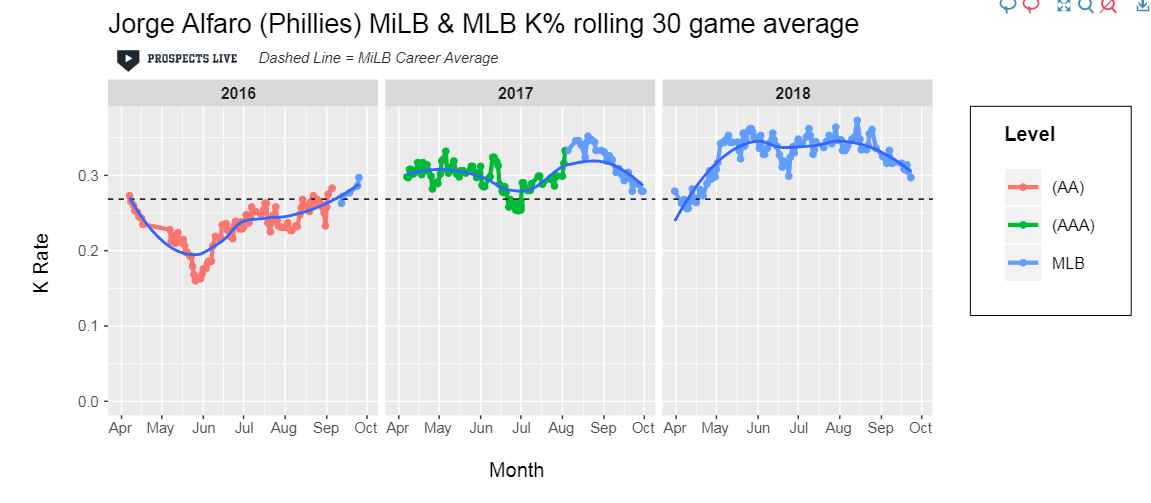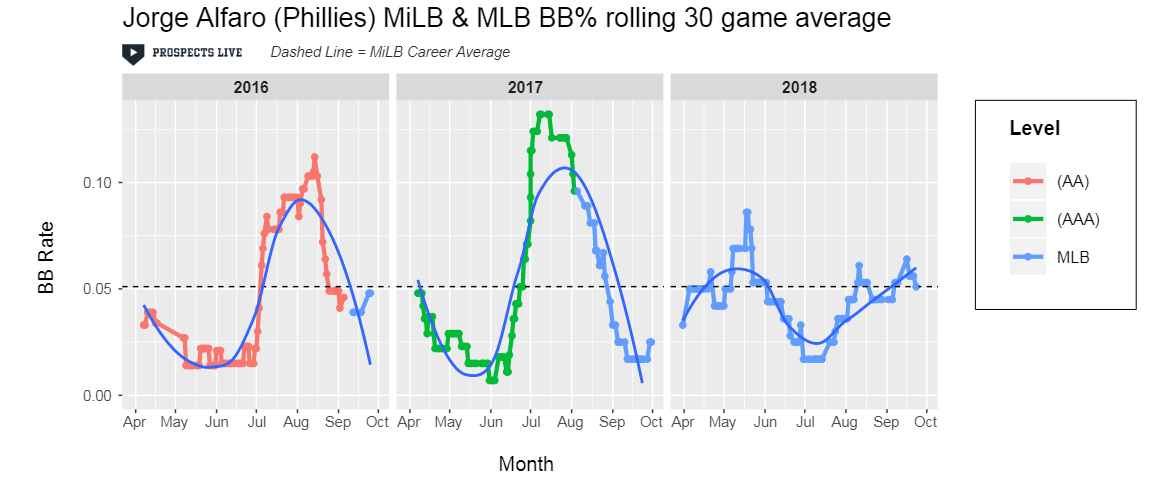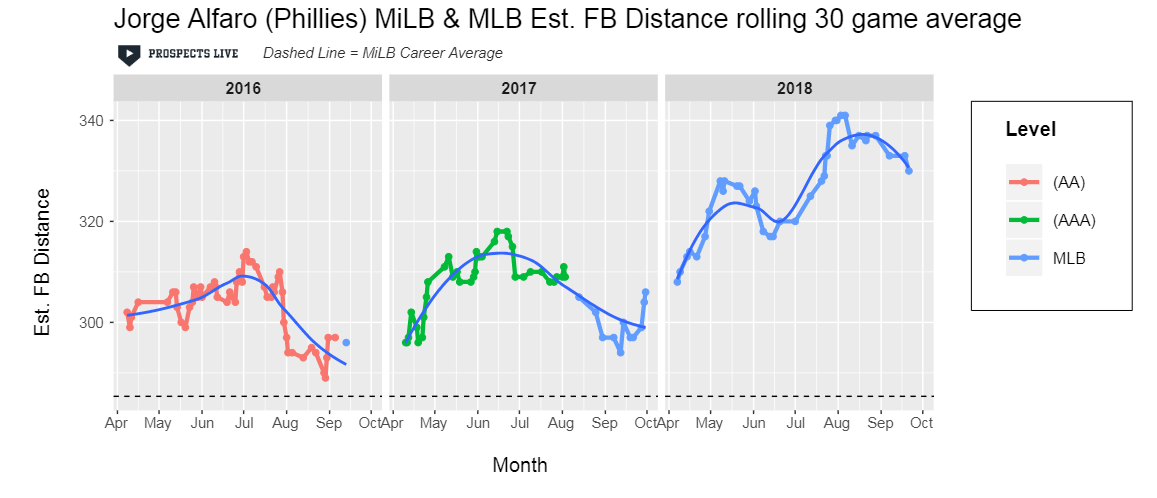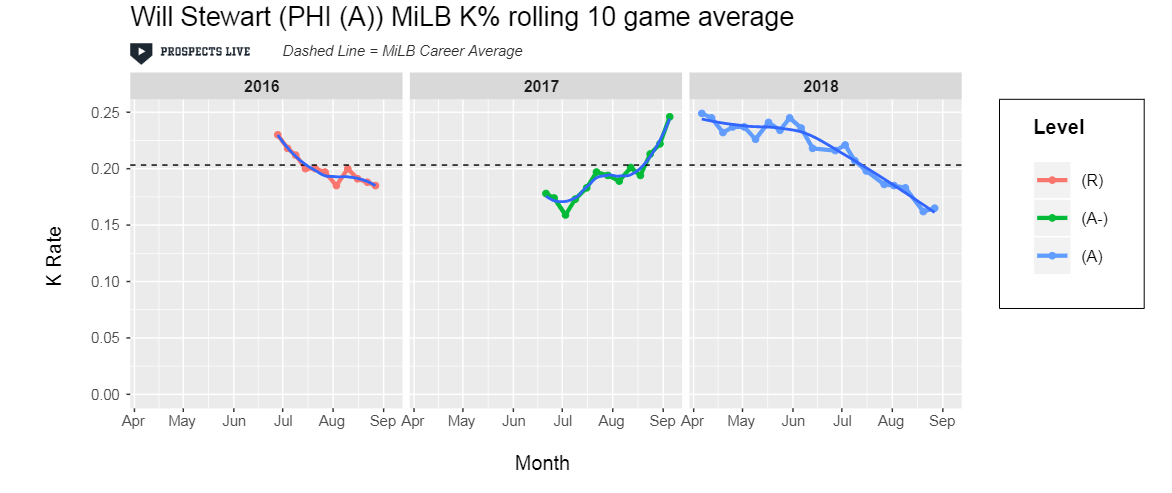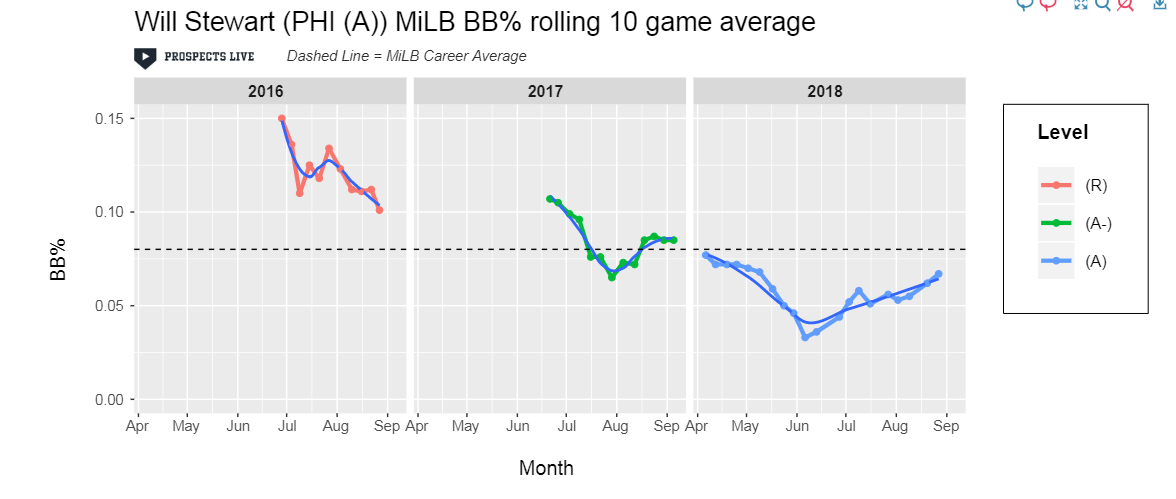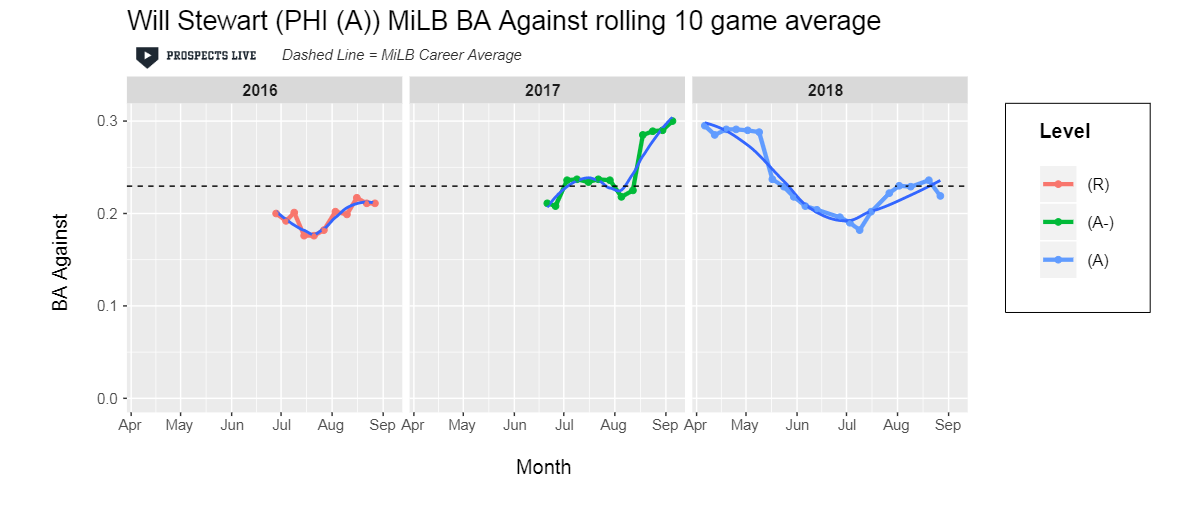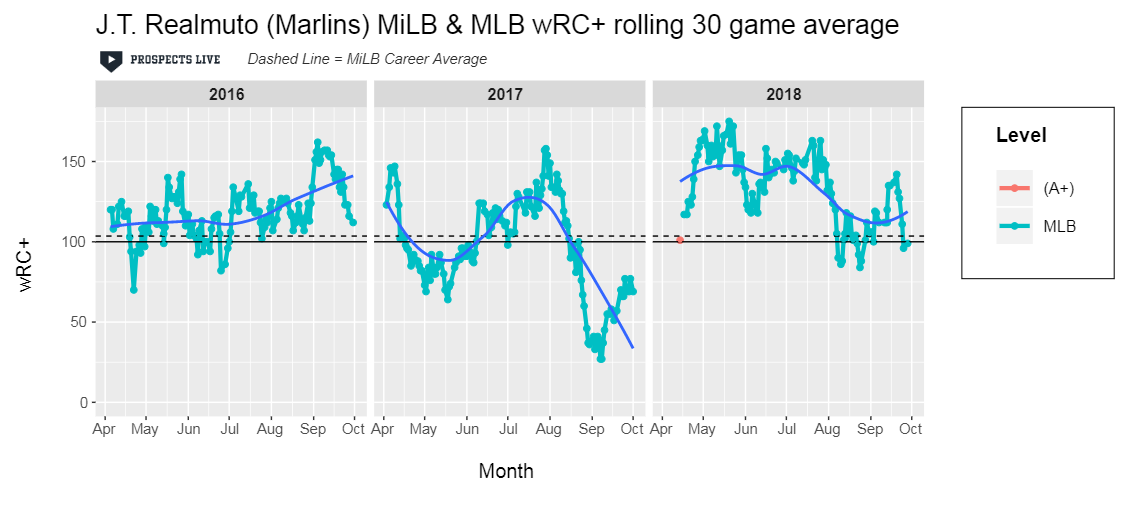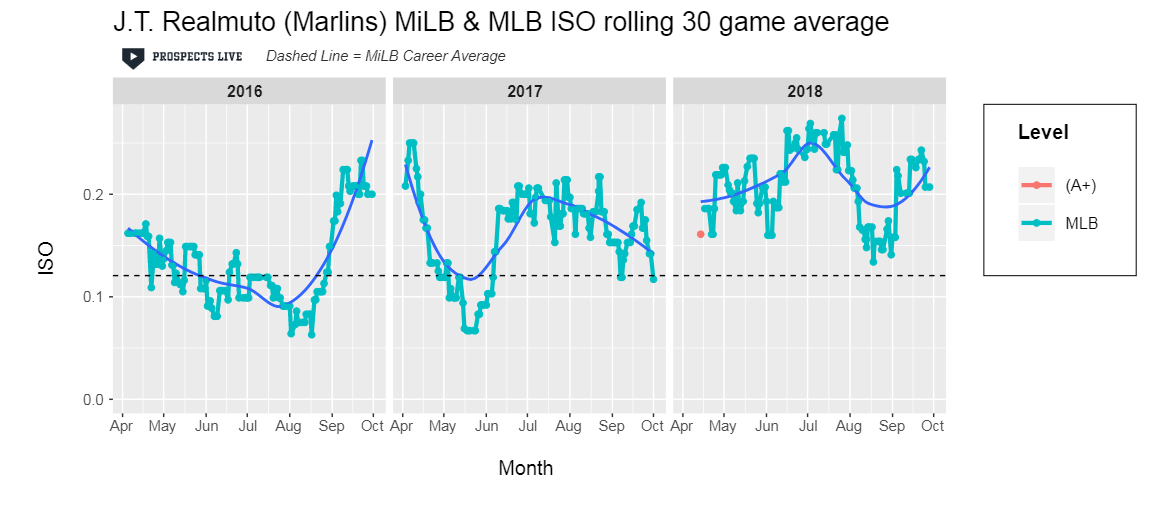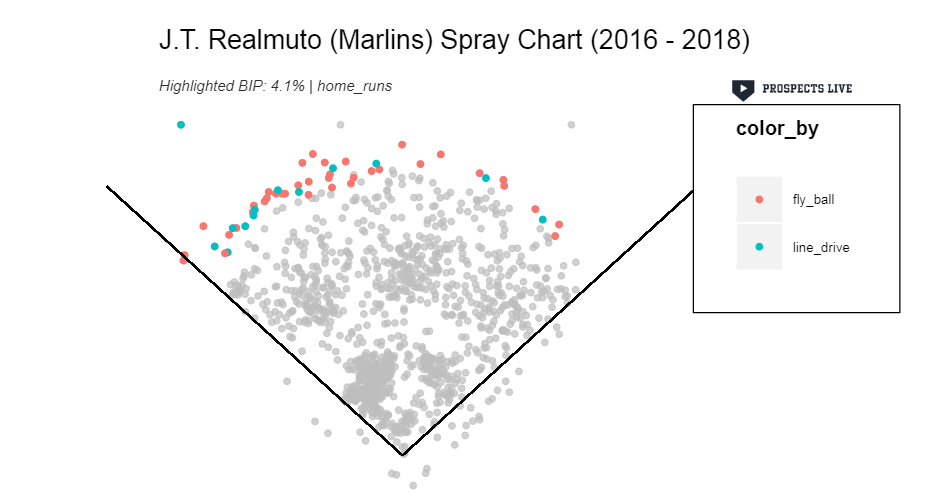In an off-season where it felt like someone forgot to light the pilot for the Hot Stove, a few blasts of heat hit the kitchen on Wednesday afternoon after the Marlins traded J.T. Realmuto to the Philadelphia Phillies for a trio of players. There’s been much debate regarding Miami’s return which was headlined by highly rated righthanded pitching prospect Sixto Sanchez, and young catcher Jorge Alfaro. Based on reports form earlier in the off-season, many felt this was underwhelming on the Marlins part, especially after several buzzer names were floated as possible return pieces. Despite the hearsay, there’s still an intriguing package of young talent headed to South Beach, let’s discuss their return.
For all of the Marlins follies over the years, this hardly ranks. In exchange for the last two years of Realmuto’s control the Marlins added an arm with front of the rotation potential, a young catcher with offensive upside who’s defense grades similarly to Realmuto’s, and a left-handed starter from the lower levels coming off a career year in 2018.
That’s not to say there is not significant risk associated with each player, in particular Sanchez, who’s dealt with a series of ambiguous shutdowns throughout last season. When Sixto pitched it was an event in the Florida State League, with our own Jason Woodell essentially moving into the stadium at Clearwater over the 2018 season. With this sort of first hand knowledge at our disposal how could I not go to Jason for his take. Jason?!?
“Sixto has a fast, athletic delivery. His arm speed is fast…really fast. There is some effort in the delivery but he repeats well and fills up the strike zone. Known for his low walk rates, Sixto is more of a control over command guy at this stage. His pitchability and sequencing made great strides in 2018 before his season ended. Additionally, his fastball command improved as he attacked hitters with his off-speed early and in fastball counts. Sixto throws three pitches. His fastball sits 99-100, touching 101 mph. It is mostly straight but does flash run. He tends to fall in love with the pitch and sometimes struggles to keep it out of the middle of the plate, where it has gotten hit hard. This did improve though. His slider flashes 60-65 with hard two-plane tilt. His changeup has good arm speed with depth and separation, sitting 90-91 mph. The pitch has evolved into a swing-and-miss offering. Size, durability, and the lack of a fourth pitch that can change eye level add to his risk. With that being said, Sixto’s stuff and improving sequencing put him at a 60 overall. SP2/3 or RP1 at peak.”
Alfaro is an interesting discussion point in this deal, as he was highly touted throughout his time in the minors, holding staying power in prospect lists. Some publications had him ranked as a Top 100 prospect for five consecutive seasons. While Alfaro might never live up to the hype, he does possess several skills that should allow him to be successful.
In 2018 his first full stint in the majors the Statcast data painted a good picture of Alfaro’s profile. He ranked second behind only Realmuto in terms of sprint speed, and ranked 110th in barrels per batted ball event, once again just slightly behind the player he was traded for.
The defining difference between the two backstops is Realmuto’s elite contact ability compared to Alfaro, the owner of one of the worst plate discipline profiles in the majors. That’s not hyperbole either, Alfaro’s O-Swing was the second highest in baseball, his swinging strike rate was the highest, and his contact rate was the lowest among players with a minimum of 300 plate appearances. That’s a terrible combination of flaws for any hitter, even one with elite measurables like Alfaro.
Fortunately his glove grades out well as he ranked 7th in defensive WAR among catchers according to Fangraphs. Alfaro is a talented but flawed player and if he can hone his approach to even slightly below league average, his combination of skills could make him one of the strongest players in the game.
The third player, Will Stewart, is an interesting throw in. He’s a lefty drafted out of the prep ranks in 2015, when the Phillies plucked him in the 20th round. Following three unremarkable seasons of rookie ball, Stewart broke out in his first full season assignment with Lakewood. His repertoire consists of four pitches led by an above average sinker adapt at driving heavy amounts of groundball contact. His three secondaries all grade out as average in his slider, changeup, and curveball, with his slider flashing the best projection of the bunch.
He’s unusual mechanically, but was adept at throwing strikes, owning the zone in the Sally League throughout 2018. I don’t believe Stewart has the bat missing ability to transition to bullpen arm in the upper minors. His fastball sits 89-93, touching 94, and none of his three secondaries leave hitters baffled. He’s a pitch to contact control arm, who lives in the zone. The likely ceiling here is back end major league starter with little sizzle. Still an intriguing system piece for a team in need of depth.
As for Realmuto, he is who we thought he was: the best catcher in the game. What he offers on both sides of the ball heavily outweighs any contribution the trio of trades players headed Miami’s way could offer in the immediate future. This trade may work for both teams, but the Phillies deserve credit for the shrewd manner in which they landed Realmuto.


